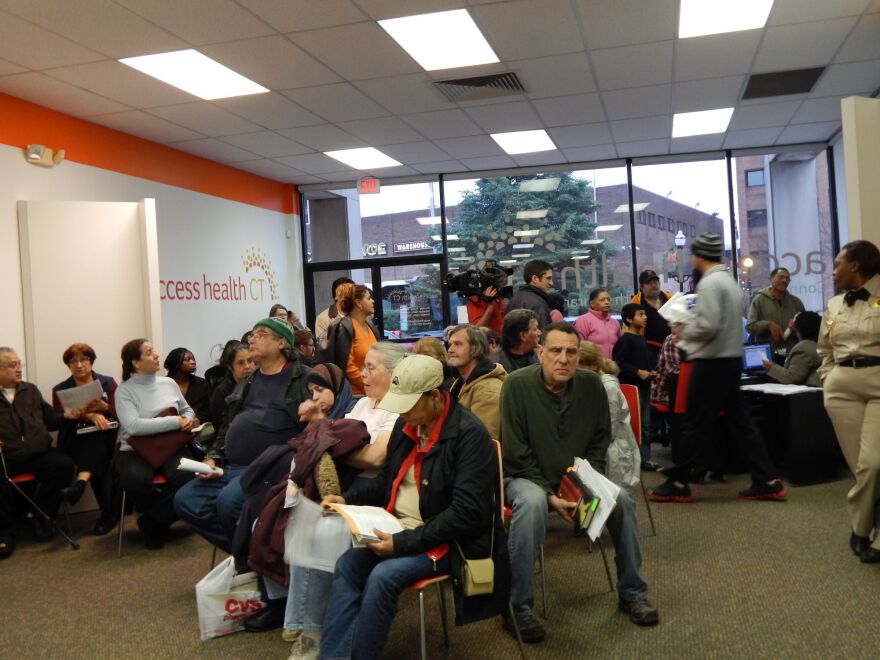Many consumers who obtain insurance through Connecticut’s health care exchange don’t understand the plans they buy -- and can struggle to access care as a result, according to a new report.
Insurance plans typically use complicated language that is difficult to understand, according to the Health Disparities Institute, UConn Health. As a result, some patients have trouble accessing care, experience delays in care, encounter administrative hassles, and face other hurdles, the study found.
The institute conducted a statewide poll last year among 516 adults who enrolled in qualified health plans through Access Health CT (AHCT), the state health insurance exchange created under the Affordable Care Act. Many struggled to understand basic insurance terms like “premium,” “deductible,” and “co-pay.”
More needs to be done to educate all health insurance consumers, regardless of where they buy their policies, said Lisa Freeman, executive director of the nonprofit Connecticut Center for Patient Safety.
“If people are going to access something, they have to understand what they’re accessing,” she said, and that goes beyond merely jargon. “It’s so much more than just words on a page; you have to understand the relationship between the different pieces. It’s really hard to put your arms around it, particularly if you’re somebody who’s new to health insurance.”
Insurers acknowledge that health plans are complex and are taking steps to make plans easier to understand.
The study found that people with more education had an easier time than less-educated respondents, according to researchers. But among people with the same education level, the study uncovered “significant differences” by race, ethnicity and language preference. Black and Hispanic consumers had more trouble understanding their plans than whites, according to the institute.
Researchers said the Connecticut findings likely mirror national trends. The study marks the first time health insurance literacy has been examined among Connecticut consumers enrolled in private insurance plans, according to Health Disparities Institute Director Dr. Judith Fifield.
Among the findings: 20 percent of respondents did not understand the use of the word “premium” as it pertains to insurance; 66 percent didn’t understand the word “formulary”; only 33 percent could calculate their out-of-pocket cost of a hospital bill when their plans included a deductible and a co-pay; and 40 percent realized in-network hospitals may have out-of-network doctors.
Access Health staff makes a concerted effort to help consumers understand health plans, but it can be challenging, said Andrea Ravitz, director of marketing and sales for the exchange. Staff strives to break plan complexities down to a fifth- to eighth-grade reading level, she said, and is trained to ask consumers whether they understand what has been explained to them.
“Health insurance by itself is extremely complex,” she said, adding many enrollees through AHCT have no prior experience with insurance. “There is a huge expectation from insurance companies, and really the industry as a whole, that people know what they’re talking about, and that’s a huge misconception. It’s almost impossible to explain it in simple terms, but we can try.”
AHCT staff encourages consumers to question doctors, hospitals, insurance companies and others whenever they come across a term they don’t know, she said. For some, she added, language barriers present additional obstacles.
Anthem, which sells policies on the exchange, has made several changes, said spokeswoman Sarah Yeager. Among them: The company has identified a list of jargon words that will never be used in member communications; and it sends new members a series of “welcome” emails to help familiarize them with their plans.
“We are currently in the midst of a significant shift in how we communicate with our members, which we believe will improve member understanding about and access to the benefits they have and the care they choose to receive,” she said.
ConnectiCare, which also offers insurance on the exchange, also is trying to eliminate confusion by using various media and messages to reach members, according to a company statement. Consumers can participate in educational seminars at the ConnectiCare Center in Manchester during open enrollment, and can make appointments year-round to speak to someone in person at the company’s centers in Bridgeport, Newington or Manchester.
“ConnectiCare understands that navigating the healthcare landscape can be confusing and complicated,” a company statement said.
To combat the problem, the Health Disparities Institute recommends a collaborative, statewide effort to simplify insurance plans and their language. The group also calls for the use of trained, in-person health insurance “navigators,” or coaches, who can help patients better understand their plans.
“Health insurance literacy is a health care disparity that we actually have the power to do something about, and we can continue to measure our progress,” Fifield said in a statement. “The first big step is stepping up our patient education to increase health insurance literacy, and also to implement more consumer-friendly health insurance plans.”
Freeman said greater transparency around health care plans and their associated costs would also help. Too many consumers are confused, she said, and “it’s keeping people from accessing care.”
This story was reported under a partnership with the Connecticut Health I-Team (c-hit.org).




